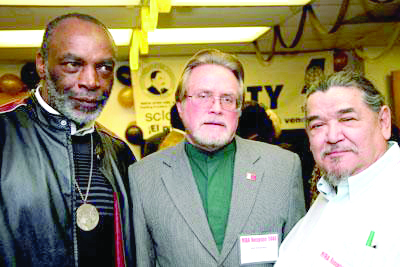
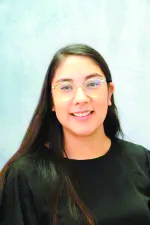
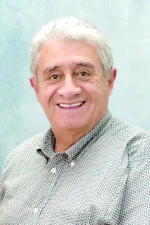
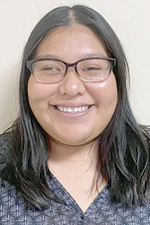
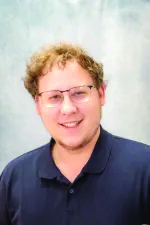
(Editor’s Note: The officers and staff of the Mississippi Immigrants Rights Alliance are the current agents of change who are a part of a large group of devoted workers who have served Mississippi’s immigrant community since MIRA’s founding in 2000. The contributors to the following report are Bill Chandler, Executive Director; Patricia Ice, Legal Project Director; Luis Espinosa, Lead Organizer; Nataly Camacho, Organizer; Loida Ventura, Development and Marketing Coordinator; and Willy Huff, Paralegal.)
Around the year 2000, it was apparent that the new millennium would require some new approaches to immigrant rights issues in Mississippi.
Construction demands of Mississippi’s new casino industry had spurred a sharp growth in the migrant labor force in the 1990s. Of the estimated 7 million undocumented migrants living in the US in the year 2000, an estimated 90,000 were in Mississippi. Although the number wasn’t excessive percentage wise, it was enough to set off alarms among nativists and conservatives who resented the newcomers’ presence.
Prior to the passage of the Immigration and Nationality Act of 1965, the U. S. had explicitly shown favoritism to migrants from Western Europe, with severe restrictions on the numbers allowed in from Africa, Asia and Latin America – the places where most of the new immigrants were born.
In 1986 came the Immigration Reform and Control Act (IRCA), also known as the Simpson-Mazzoli Act, aimed specifically at cracking down on so-called “illegal immigration” from Central America while offering “amnesty” to those who had lived and worked in the U.S. since 1982. But the frequently bitter debate over what to do about the millions of new migrant workers kept growing louder.
The Mississippi Immigrants Rights Alliance (MIRA) was organized in the fall of 2000 to address immigrant and immigration issues that had developed to the boiling point in Mississippi. This concerned group of labor, legislative, human rights and civil rights leaders combined their expert skills in advocacy, education, organizing and legal services to expand and protect the rights of immigrants and their families in Mississippi. The result of their work was the birth of MIRA.
“MIRA envisions a Mississippi that supports, protects, and welcomes immigrants from across the globe working hand-in-hand to create a thriving community called home,” the group’s organizers said in their Mission Statement.
IMMIGRANT DEMOGRAPHICS
Although the Mississippi Delta has long been noted for its abundance of agriculture, the region today is less dependent on immigrant farm workers than before.
“We hardly have any Latinos in this remote region,” said Elizabeth Canales, a Mississippi State University agricultural economist. Economic necessity, however, has shifted workforce demands to the meat and poultry industries in central Mississippi. And that is where a highly visible immigrant workforce exists today.
The American Immigration Council (AIC) reported in 2018 that 70,860 immigrants in Mississippi comprised 2 percent of the state’s population. But it also reports that in 2018, 55,305 native-born Mississippians had at least one immigrant parent.
The AIC listed the top countries of origin for immigrants in Mississippi as Mexico (23 percent of total immigrants), Guatemala (10 percent), India (8 percent), the Philippines (4 percent), and Vietnam (4 percent).
Scott County is sometimes called the “home of Mississippi’s poultry industry.” From 1990 to 2000, the Latino population in Scott County increased by more than 1,000 percent, census reports show.
On August 7, 2019, under the goading of both state and national political interests, the largest raid on a major industry in Mississippi history was staged by U. S. Immigration and Customs Enforcement officers at the state’s poultry plants, leading to the arrest of 680 immigrant workers.
The result was that the poultry industry suffered a drastic decline in production and profits.
The workers who were considered to be “imminently deportable,” in 2019, suddenly became indispensable the following year, noted reporter Maria Hinojosa said.
“They were taken from their jobs, and many of them were deported. Then the pandemic happens. We go back, and it’s like, they’re actually now essential.”
EARLY DEVELOPMENTS
MIRA co-founder and executive director Bill Chandler began his career as a labor and community organizer in the 1960s in California and was very much a part of the Civil Rights Movement that had swept across the nation, including working assignments in Mississippi and other parts of the Deep South. He had spent most of the decade of the 1960s and 1970s as an organizer for the United Farm Workers of California.
“I grew up in a community that was predominantly Mexican American,” he said. “And in the 1960 presidential election between John Kennedy and Richard Nixon, a lot of people in the community got excited about Kennedy. I volunteered for an organization that took advantage of that excitement and registered voters. We also reached out to encourage people to become citizens.”
Chandler was a strong supporter of the farmworker’s union movement led by Cesar Chavez in California. He was one of many volunteers who left their regular jobs to devote time to the farmworker’s fight to organize.
“In the sixties. I was just a hospital worker. But I learned a long time ago that you can be a worker and you can organize, too. So, I was involved in the labor movement nonstop up to this point, and this is not that much different. I ended up working with Cesar Chavez with the farm workers union, and in 1965, we had a strike that lasted five years.”
From California, Chandler went to Texas to support a strike there. He met an old friend who told him about the plight of construction workers from Mexico who had been cheated of their wages and had been arrested in Gulfport.
They confronted the contractor, the contractor agreed to their demands, but the next day, the Gulfport police and the border patrol were there to arrest them, he said. That incident is what triggered the interest of Jim Evans and lots of other people to start MIRA in November of 2000.
“One of the ministers involved in this cause told me that she was going to bring an immigration attorney to the next meeting. And I said, great. But in my mind, I thought of a white female or whatever. But when the immigration lawyer came to the meeting and introduced herself, it was Patricia Ice.”
FIRST MEETINGS
“I came to Mississippi to stay in 1989,” Chandler said. “So, it was a natural thing that oftentimes we would put articles in the Jackson Advocate about what was happening with workers. And later of course, we included the Latino and the greater immigrant community.”
“If you go back to our first meeting, it was a combination of people from a lot of organizations, including SCLC – the Southern Christian Leadership Conference. Jim Evans at the time was president of the Mississippi chapter. He is president of MIRA’s board of directors and has been with us from day one. We also had representation from the Jackson NAACP president Delores Lee who’s also on our board. And we have a variety of local people who care about immigrants on the board, including immigrants who live here as well.”
LEGAL ARM
Attorney at law Patricia Ice, MIRA’S Legal Project Director, came to Mississippi from Michigan. A native of Detroit, she began working in immigration law while still in her native state.
“I moved here in 1998 to work at Mississippi College School of Law as a reference librarian,” she said. “But I was already a lawyer, and I had done immigration law in Michigan. I was the first person to teach the immigration law class at Mississippi college beginning in 2006.”
Ice had come to know the church leaders who were concerned about having an attorney skilled in immigration law to advise and represent the growing number of immigrants in their respective congregations. She began working with the charitable groups while still a law librarian.
“I have never really looked at this project as just Latino or Hispanic, although most of my clients are Latino or Hispanic,” she said. “I began doing the work around 1999 while the United Methodist Church, Hispanic Ministries and Catholic Charities were working with Latinos in Forest and Morton in Scott County. But really my work has always been with people from a variety of countries. I’ve worked with people from about 70 countries. And I’ve basically worked with families.
“I work with a lot of American citizens who were born here already. So, I feel like I’m helping American citizens as well as people from other countries. A lot of people don’t understand that I’m working with Americans, and I’m helping to enhance the community by helping those families get their legal papers to stay here in the United States.”
Chandler also pointed out the diverse nature of Attorney Ice’s work with MIRA.
“We even had white folks from Europe that she worked with,” Chandler said. “Patricia worked with people from various countries in Africa, and of course, Latin America, the Caribbean, Asia, and India.”
COMMUNITY OUTREACH
Despite the risks associated with community organizing during the pandemic, MIRA’s staff and volunteers never backed off from their commitment to the health, safety, and human rights of immigrants and workers in the state.
Lead Organizer Luis Espinosa and Organizer Nataly Camacho constantly ventured out into the immigrant communities they serve and connected with the people there who might otherwise encounter difficulty in their day-to-day lives.
“Luis and I actually go out into the various communities,” Camacho said. “We’ve spent a lot of our time with the people in Scott County. They have the biggest Hispanic population in the state. So, we try to go to the most populated areas. Hispanics are big on religion here in Mississippi. They’re mostly Catholic, so we try to reach the population through churches. We try to reach out to the leaders of the church, the priests, and also to the people in the community who can help us reach others.”
Beginning with the early days of the COVID-19 pandemic, MIRA worked to ensure that Mississippi’s immigrant community had access to important health resources, information, and financial support.
“We focus right now 65 to 70 percent on health issues,” Espinosa said. “But at the same time, we try to keep going in other areas too. The immigrant community needs education about so many areas of life in the United States. We try to cover financial education – giving information about how to open a checking account or saving account, how to manage their money. Like Natalie said, we’ve been working with other organizations, too. For example, two years ago [we worked] with the Census because we understand how important it is for the people to get counted in the census. We work to try to make all the Latino community be counted.”
MIRA worked in collaboration with the Mississippi State Department of Health, the Urban Institute, and the Jackson Free Clinic to provide vaccines and the recommended booster shots to adults and children.
“As soon as COVID-19 shots were available in 2021,” Camacho said, “we began holding vaccination events. We focused on providing first and second doses of the vaccines for adults, and this year, we are delivering booster shots to those already vaccinated, and reaching out to families now that the shots are authorized for children ages 5 and up.”
“We reach out to them mostly to hold our vaccine events and we’ve also been partnering with the Jackson Free Clinic as well as the organization HEAL,” she said. “They’ve been very helpful and we’re very happy to be working with them.”
LOIDA AND WILLY
Loida Ventura and Willy Huff are both recent graduates from their respective college programs, Loida was in a master’s degree program at Millsaps College. Willy was also in a graduate program and looks forward to going to law school.
“Right now, I’m working as the Development Coordinator for MIRA and I do the applications and background work for Luis and Nataly for the COVID vaccine project,” Loida said. “I graduated from Millsaps last year with a master’s degree with a student visa. But if you want to stay here, it’s really hard to apply for a work visa. It took three tries for me. The whole process is really stressful, but, thankfully, we were able to get it.”
Willy Huff, MIRA’s paralegal said that since coming to work at MIRA he has found an answer to the question of what he wanted to do with the rest of his life. He has decided on becoming a lawyer thanks to the influence of Patricia Ice and her work with MIRA.
“Working here has definitely helped me decide what I want to do in the future,” he says. I wasn’t entirely sure what I was going to be doing after I finished graduate school, But after I started here, I quickly realized that law, and particularly immigration law, is what I want to do. I’ve always wanted to be part of this struggle for justice for oppressed and marginalized people, but I wasn’t sure where I would fit in. But when the opportunity came up here and I was able to meet with the clients, I figured out that immigration law is what I want to do.
“Just being part of the struggle for justice and equality has always been a big thing for me,” he stressed. “So, using whatever skills I might have and to be able to further develop in law school, that’s what I really look forward to.”
CIVIC ENGAGEMENT
Over the years, MIRA has developed an effective Civic Engagement program.
“We take as many people as possible into the State Capitol to meet with the legislature,” Bill Chandler says. “Usually, it’s in January. We pick the days and the legislators strategically and we try to get in early once the bills have been introduced and we know what we are opposing and what we’re supporting. We have had as many as 200 people come on Civic Engagement Day. But we break up into groups, and each group has a person that can interpret so the non-English speakers can communicate their concerns to the legislators.”
Of particular interest are members of the House or Senate judiciary committees, where the laws that affect immigrants come from.
“We’re particularly interested in legislators who are on the judiciary committees because so many of the bills that we have killed were very racist in their intent and had been introduced in the judiciary committees of the House or the Senate . And occasionally we’ve had a sympathetic chair, like Percy Watson, who was chair of the judiciary committees on the House side. He’s a Black legislator from Hattiesburg and has a long history in civil rights participation.”
The citizen-lobbyists brought to the Capitol each year by MIRA have found many sympathetic legislators who effectively blocked many of the proposed bills that would have made life a lot more difficult for immigrants in Mississippi.
The work of MIRA at the State Capitol was captured on film in 2017 in “Field of Vision —Here I’ll Stay,” directed and produced by Lorena Manriquez and Marlene McCurtis.
It begins with the story of 13-year-old Yizel speaking directly to the camera.
Every day, she says, she has to deal with people who judge her on how she looks, how she acts, how she speaks. But Yizel was born in the USA, although her parents are undocumented workers from Mexico and are subject to be deported at any time.
“I don’t know what’s going to happen in the future. I think that’s the hardest problem,” she says.
Yizel and her family joined MIRA and took part on Civic Engagement Day at the Capitol in January 2017. MIRA supporters such as civil rights activists Hollis Watkins, Jaribu Hill, and other Mississippians encouraged the 50 or so immigrant workers in work.
“People here are not a burden,” another MIRA visitor said. “They’re here to give back. They want to be able to do it and provide for their families without the fear of harassment, without the fear of their families being torn apart.”
Yizel says at the end of their effort at the Capitol: “Here we came, and here we’ll stay.”
Their work was effective because of the 12 anti-immigrant bills introduced, legislators approved only one, the film concludes.
“We have to make sure and coerce with a little pressure to insist on them doing what they know is right,” Watkins said.
Chandler summed up both the vision and the mission that has been MIRA’s reason for being after nearly 22 years of hard and consistent work.
“I think we all see the issues in our community and we do what we need to do or what our talents will allow us to do to uplift people and to decrease the suffering that we all share in some way,” Chandler said.

